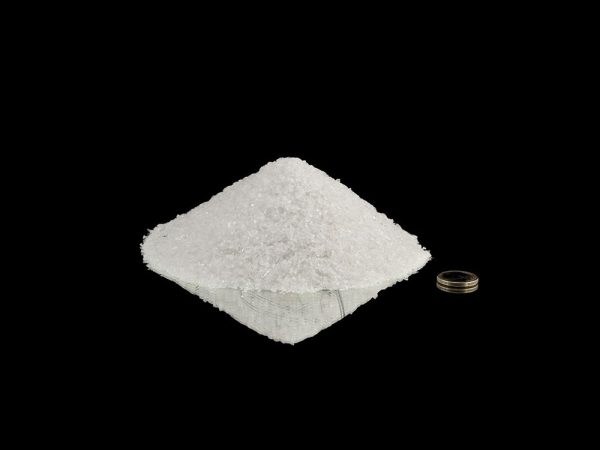
The quality of high-purity quartz is not a simple correspondence with the content of impurity elements in the raw material, but is closely related to the selectivity of impurities determined by the mineralogy characteristics of the raw material process. There are obvious differences in the mineralogy characteristics of different types of quartz ore. Detailed analysis of the mineralogy characteristics of quartz raw materials is the basis for determining the properties of quartz raw ore, the mineral processing and purification process plan, and the product direction.
The impurity minerals in quartz are mainly wrapped on the surface of quartz sand particles or filled in the gaps, such as mica, feldspar, etc. These minerals are easy to remove, and they can be removed by separating their monomers through mineral processing technology. During the crystallization of siliceous raw materials, due to various factors during the mineralization, cavities are generated during crystallization, and structural defects occur. The solution of other minerals is injected into it, and inclusions are formed by being surrounded by quartz during the growth process, and gas-liquid wrapping The body is mainly composed of three systems of H2O, CO2 and CH4.
Crystal structure impurities in quartz are divided into lattice impurities and non-lattice impurities. The lattice impurities mainly replace the silicon atoms in the silicon-oxygen tetrahedron with other types of atoms in an isotropic manner, and the main impurity elements are Al3+, Ti4+, Ge4+, etc.
Purification Process of High Purity Quartz
The purification process of high-purity quartz is to first grind the vein quartz or quartzite to the required particle size and remove some impurities, and then separate or dissolve the impurities by physical and chemical means. The entire purification process can be simply summarized as three processes of pretreatment, physical treatment and chemical treatment, specifically using various beneficiation methods such as crushing, grinding, screening, magnetic separation, pickling, and chlorination roasting.
Crushing – grading pretreatment
The crushing-grading pretreatment in the process of high-purity quartz processing is to dissociate effective monomers of quartz and gangue minerals and release fluid inclusions, and to provide raw materials with a suitable particle size range for subsequent quartz purification processing.
Scrubbing-grading desliming
Scrubbing is to remove the thin film iron, bonding and muddy impurity minerals on the surface of quartz sand by means of external mechanical force and friction between sand particles, and then through the desliming process to achieve the effect of removing impurities from quartz sand. The content of sio2 in quartz increases with The finer the grain size, the lower the content of iron and aluminum impurity minerals. At the same time, quartz sand contains more clay minerals. Therefore, scrubbing-grading desliming can effectively reduce iron, aluminum, calcium and other impurities.
Gravity separation – magnetic separation – flotation
Different minerals have different densities. Gravity separation is the beneficiation method that uses the influence of gravity on mineral particles to separate different minerals.
Magnetic separation is a beneficiation method that realizes mineral separation in an uneven magnetic field according to the magnetic difference of minerals in ore. Weak magnetic field can remove magnetic minerals with strong impurities, such as magnetite; strong magnetic field is used to separate impurity minerals with weak magnetic properties, such as hematite, ilmenite, garnet, etc.
Flotation is a beneficiation process in which solid minerals are floated out of a water suspension (slurry) based on the differences in the physical and chemical properties of the mineral surface. Common gangue minerals such as mica, kaolin and feldspar in quartz minerals have similar physical and chemical properties. Compared with other beneficiation methods, flotation can achieve satisfactory separation results. Flotation is based on the chemical properties of feldspar and mica. The main method of separating quartz from similar minerals.
Acid treatment
After the initial physical purification, most of the impurity minerals have been removed, but there are still a small amount of impurity minerals in the grain boundaries, micro-cracks and crystals. The acid (alkali, salt) treatment is mainly to remove these impurities.
High temperature burst method
The direct high-temperature burst method uses high-temperature roasting and microwave heating to create crystal defects and high-energy regions on the surface of quartz crystals, and gasifies and expands gas-liquid inclusions, and then uses water quenching to burst the expanded gas-liquid inclusions instantaneously.
Chlorination roasting method
Chlorination roasting is the most important method to remove interstitial atom impurities such as quartz lattice impurities and alkali metals. Chlorination roasting is to convert impurity component ions into low-boiling chlorides under certain temperature and atmospheric conditions, and then remove impurities The process of separating components.
